Silky Spaghetti Carbonara Recipe: Rustic Italian Comfort Magic
Creamy, dreamy carbonara elevates spaghetti into a culinary symphony that whispers Italian comfort.
Pasta lovers recognize this Roman classic as pure magic on a plate.
Salt-cured pancetta dances with silky eggs, creating a sauce so luxurious it makes taste buds swoon.
Professional chefs guard their secret techniques, but home cooks can master this deceptively simple dish with confidence.
Pecorino romano cheese adds a sharp, salty punch that cuts through the richness.
Minimal ingredients unite to create something extraordinary – no fancy techniques required.
You’ll feel like a kitchen maestro when presenting this authentic Roman masterpiece.
Gather your ingredients and let the carbonara adventure begin!
Spaghetti Carbonara Loved for Its Simplicity
Spaghetti Carbonara Cooking Elements
Pasta Base:Protein and Cured Meat:Seasoning and Flavor Enhancers:Spaghetti Carbonara Cooking Plan
Step 1: Boil Pasta to Perfection
Cook spaghetti in a generously salted pot of boiling water until it reaches al dente texture.
Carefully set aside some pasta water before draining the noodles completely.
Step 2: Crisp Up Pancetta
Heat a skillet over medium flame and cook diced pancetta until it turns beautifully crispy and golden.
For an extra flavor boost, briefly rub a garlic clove around the pan before removing it.
Step 3: Whip Up Creamy Egg Mixture
In a mixing bowl, whisk together:Step 4: Combine Pasta and Pancetta
Transfer hot, drained spaghetti to the skillet with crispy pancetta.
Thoroughly toss the pasta, ensuring it gets coated in the rich, flavorful fat.
Step 5: Create Silky Sauce
Remove skillet from heat and quickly pour the egg mixture over the pasta.
Vigorously toss the ingredients to develop a luxurious, creamy sauce.
Gradually add reserved pasta water to achieve the perfect consistency.
Step 6: Final Touches and Serve
Taste and adjust seasoning with additional salt and pepper if needed.
Plate immediately and sprinkle with extra Parmesan cheese for a classic Italian finish.
Smart Prep Tips for Spaghetti Carbonara That Won’t Scramble
Reheat Spaghetti Carbonara Like It’s Fresh
Comfort Food Pairings for Spaghetti Carbonara
Spaghetti Carbonara with Classic Twists on Tradition
FAQs
The key is to mix the hot pasta with the egg and cheese mixture off the heat, using the residual warmth to gently cook the eggs without scrambling them. Toss vigorously and quickly to create a smooth, silky sauce.
Pasta water contains starch that helps bind the sauce and adjust its consistency. If the sauce is too thick, add a little reserved water to thin it out and create a perfect creamy texture.
While traditional carbonara uses pancetta or guanciale, you can use bacon as a substitute. Just keep in mind that bacon has a different flavor profile and will alter the authentic taste of the dish slightly.
The hot pasta slightly cooks the eggs, but for extra safety, use fresh, high-quality eggs from a trusted source. If you’re concerned, you can use pasteurized eggs to reduce any potential risk.
Print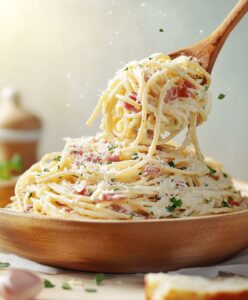
Spaghetti Carbonara Recipe
- Total Time: 20 minutes
- Yield: 4 1x
Description
Creamy spaghetti carbonara whisks home cooks straight to Roman culinary traditions with its silky egg sauce and crisp pancetta. Classic ingredients blend perfectly, promising restaurant-quality comfort that delights you at first delicious bite.
Ingredients
Pasta and Meat:
- 12 ounces (340 grams) spaghetti
- 4 ounces (113 grams) pancetta or guanciale, diced
Eggs and Cheese:
- 2 large eggs
- 1 large egg yolk
- 1/2 cup (50 grams) freshly grated Parmesan cheese (plus extra for serving)
Seasonings and Optional Additions:
- 1/4 teaspoon black pepper (or to taste)
- 1/4 teaspoon salt (optional)
- 1 clove garlic, peeled (optional)
- 1/2 cup reserved pasta water
Instructions
- Bring a generously salted water pot to a rolling boil and submerge spaghetti, cooking until perfectly tender with a slight bite. Carefully extract ½ cup of starchy pasta water before draining the noodles completely.
- Render the pancetta in a heated skillet, transforming the cubes into crisp, golden morsels. Briefly swirl a garlic clove around the pan to infuse subtle aromatics, then discard the clove.
- Craft a silky sauce base by whisking eggs, an additional egg yolk, finely grated Parmesan, and freshly cracked black pepper in a mixing vessel until smoothly integrated.
- Transfer the steaming pasta directly into the skillet with crispy pancetta, ensuring each strand becomes coated with the rich, savory fat.
- Immediately remove the skillet from heat and pour the egg mixture over the pasta, rapidly tossing with dynamic movements to create a luxurious, velvety coating. Gradually introduce reserved pasta water to achieve the ideal creamy consistency.
- Perform a final seasoning assessment, incorporating extra salt and pepper if necessary. Plate the carbonara promptly, garnishing with an additional sprinkle of Parmesan cheese for enhanced flavor complexity.
Notes
- Create a silky sauce by removing the skillet from heat before adding eggs to prevent scrambling, ensuring a smooth, creamy texture.
- Swap pancetta with bacon or plant-based alternatives for dietary preferences, maintaining the recipe’s rich, savory essence.
- Use room temperature eggs for better integration and smoother sauce, allowing ingredients to blend seamlessly without temperature shock.
- Reserve pasta water is crucial for adjusting sauce consistency, helping to emulsify and bind the egg mixture with pasta perfectly.
- Prep Time: 5 minutes
- Cook Time: 15 minutes
- Category: Dinner
- Method: Boiling
- Cuisine: Italian
Nutrition
- Serving Size: 4
- Calories: 490
- Sugar: 1 g
- Sodium: 600 mg
- Fat: 20 g
- Saturated Fat: 7 g
- Unsaturated Fat: 10 g
- Trans Fat: 0 g
- Carbohydrates: 55 g
- Fiber: 3 g
- Protein: 19 g
- Cholesterol: 210 mg

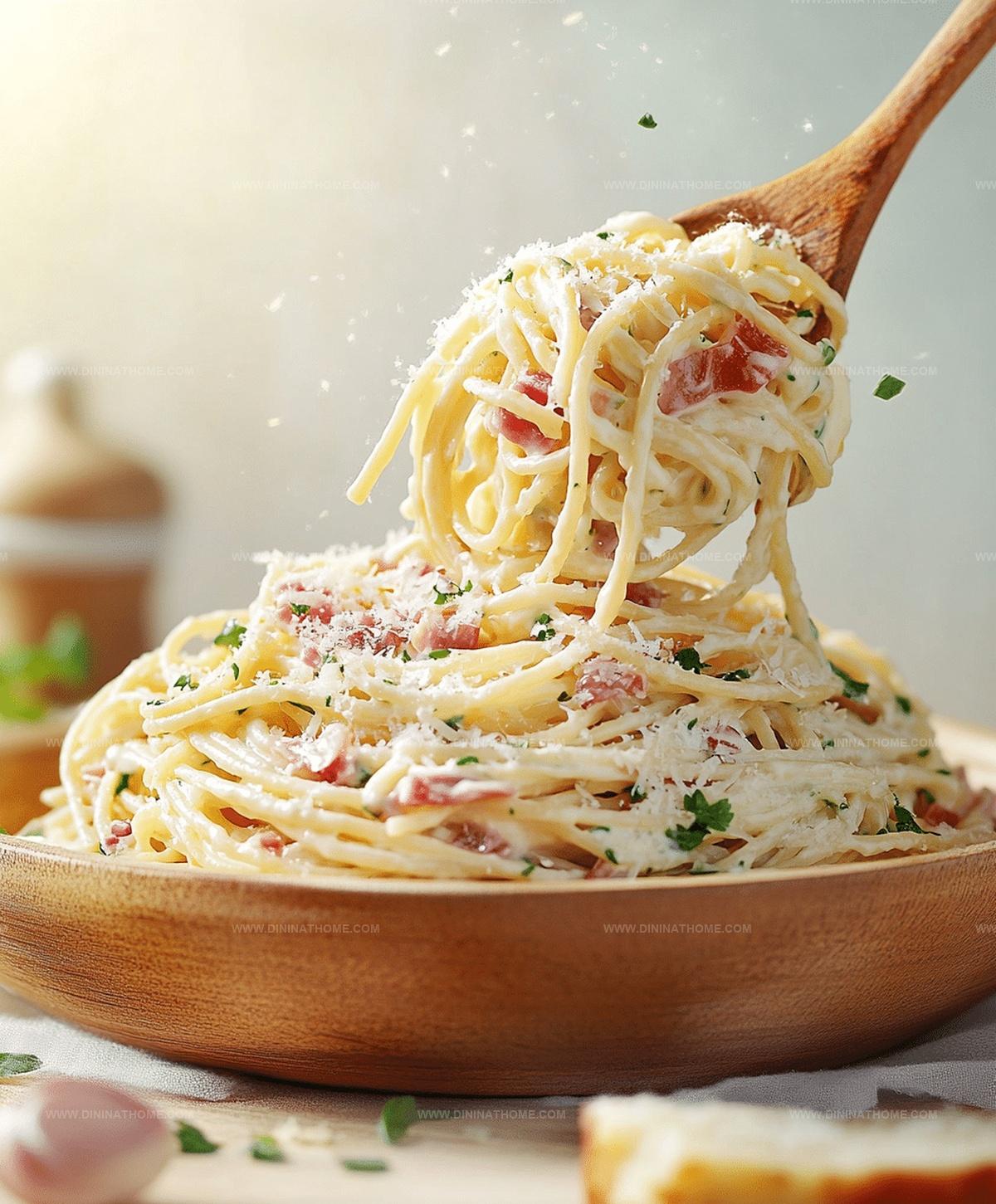
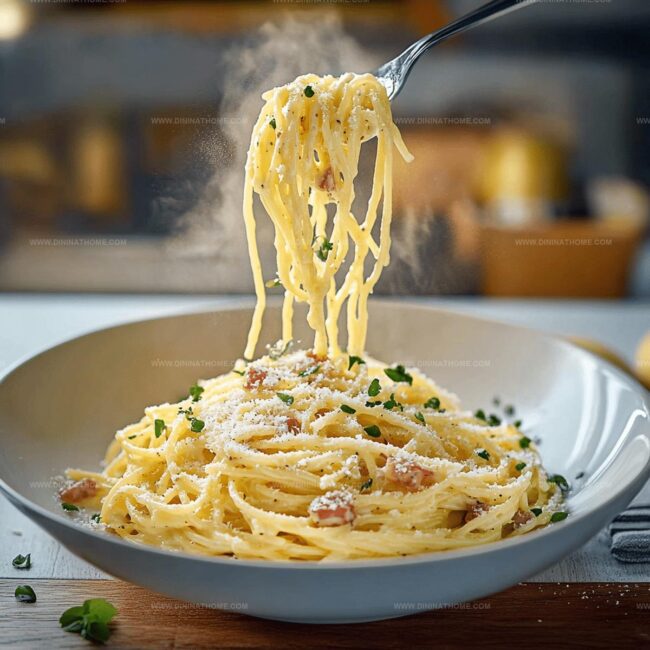
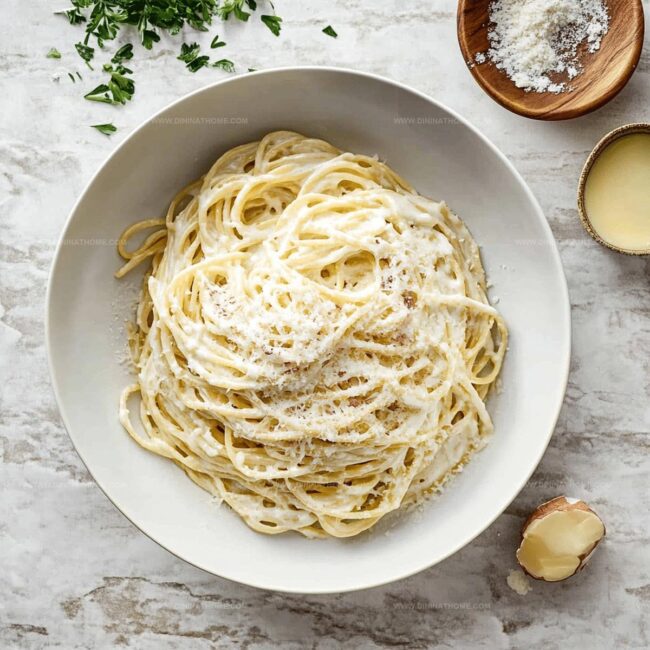
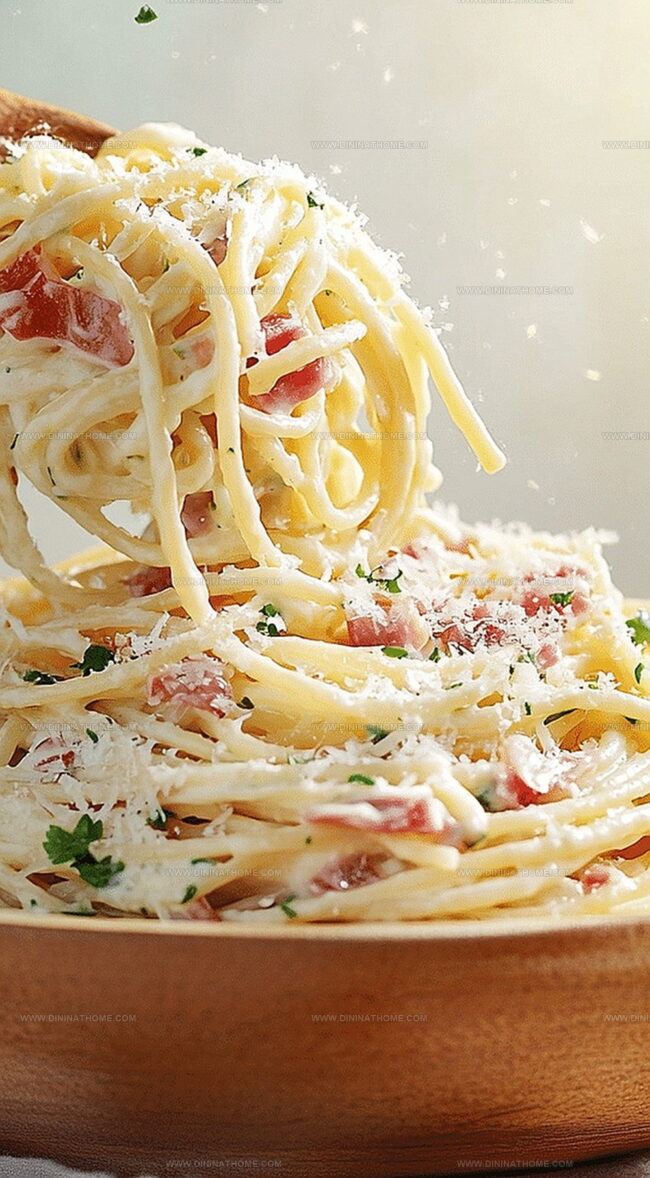
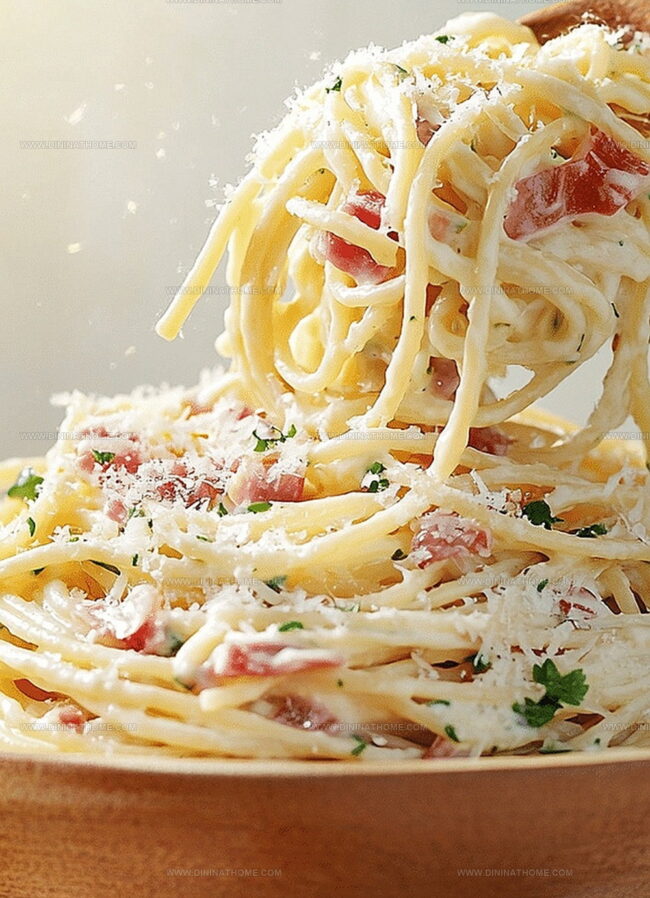
James Walker
Lead Recipe Developer & Culinary Educator
Expertise
Southern Cuisine & Farm-to-Table Cooking, Recipe Development & Testing, Culinary Education & Instruction
Education
School: Auguste Escoffier School of Culinary Arts
Program: Diploma in Culinary Arts and Operations
Focus: Comprehensive training in classical and modern culinary techniques, kitchen operations, and farm-to-table practices.
James didn’t learn cooking from a TV show, he learned it from busy kitchens, family gatherings, and long afternoons spent testing recipes the hard way.
After training at the Auguste Escoffier School of Culinary Arts, he brought his love for real, down-to-earth food to every dish he makes.
At Dining At Home, James loves building recipes that feel familiar but still have something special, like adding a twist to a classic or making a slow Sunday dinner feel brand new.
When he’s not in the kitchen, you’ll probably find him swapping garden tips at the farmers’ market or teaching his daughter how to flip pancakes without a mess (almost).